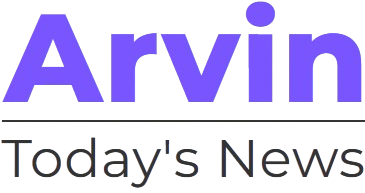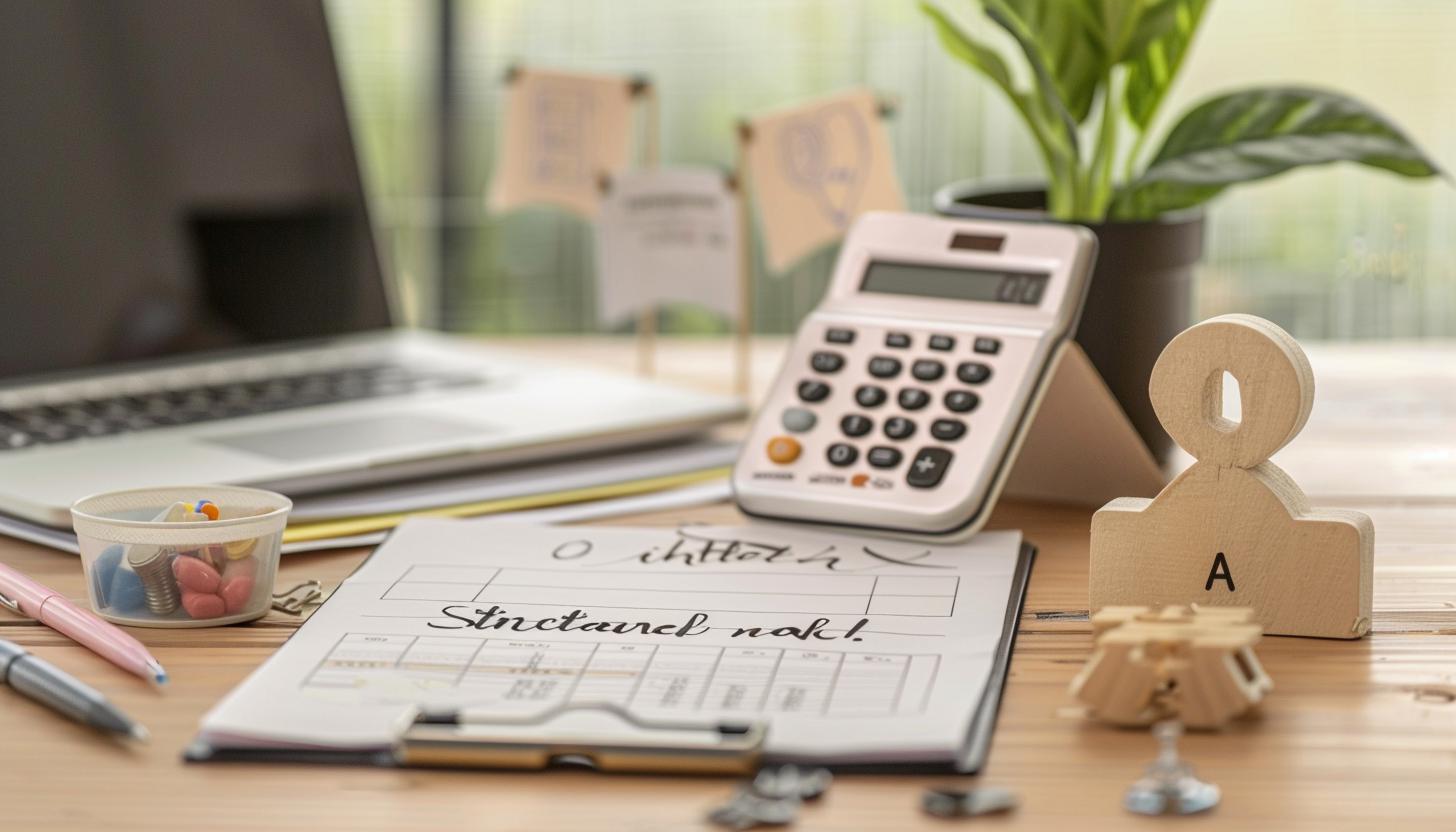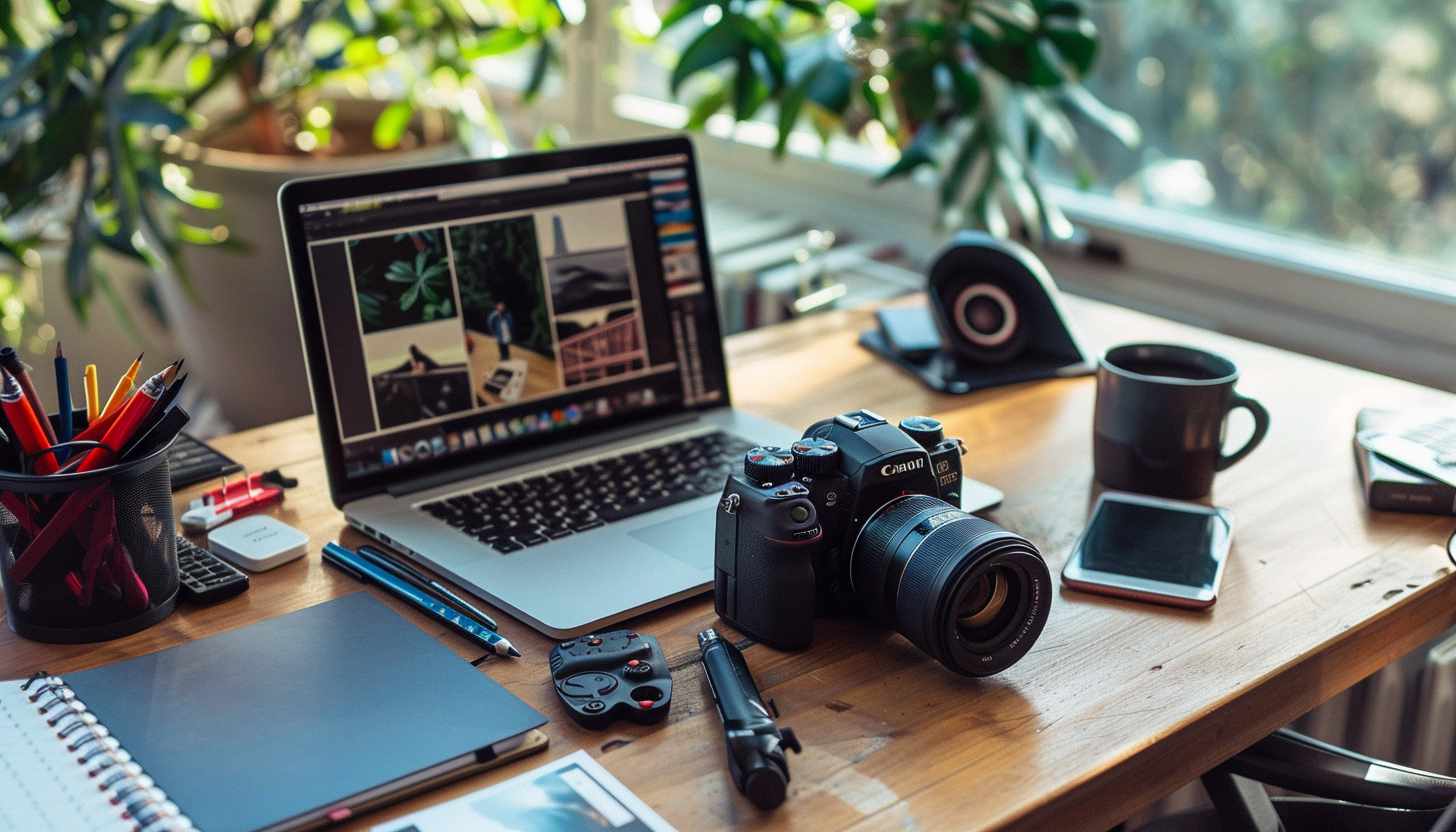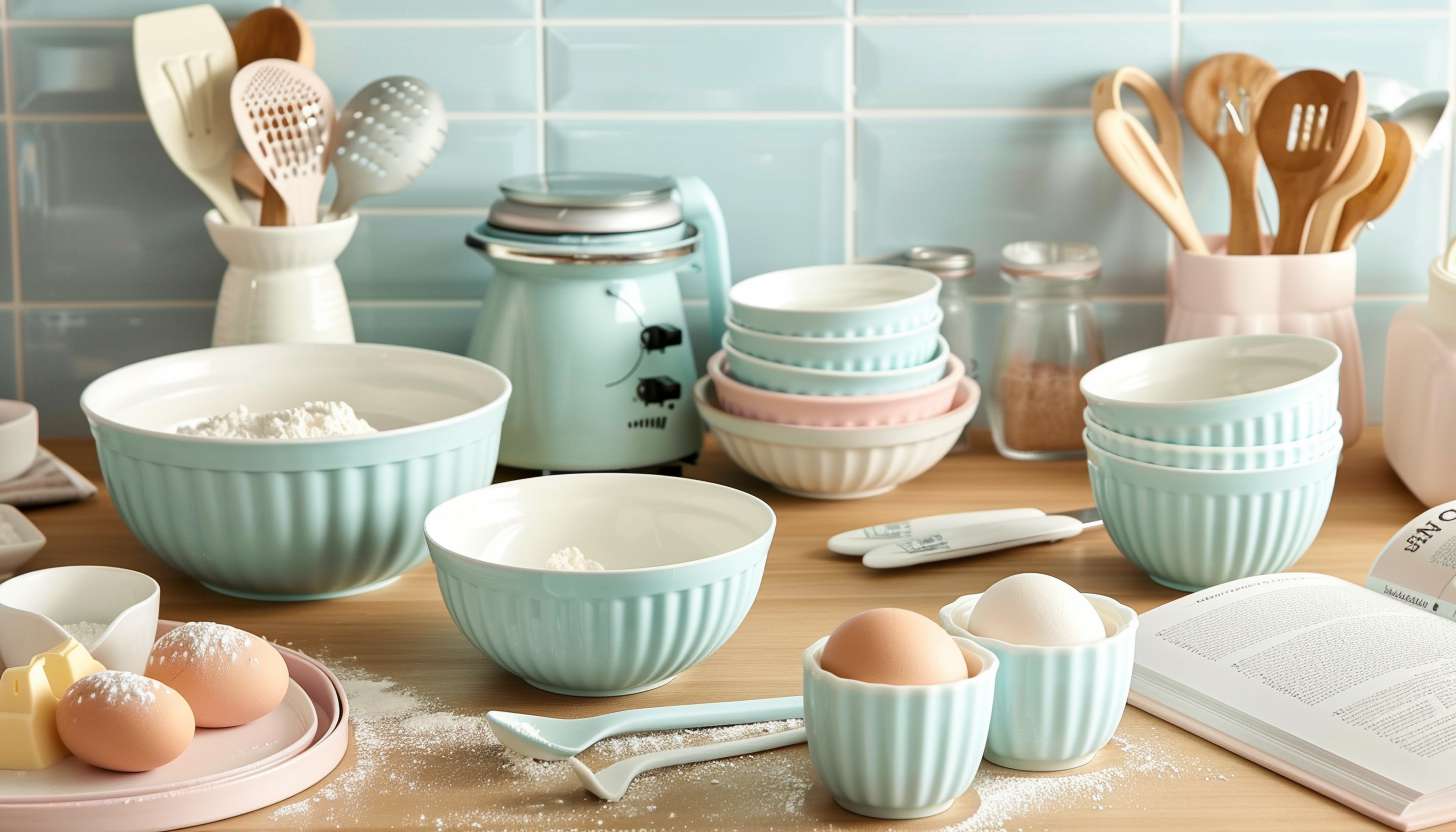If you’ve been scrolling through TikTok and find yourself inspired by influencers like AuriKatariina, or others who’ve made a splash in the “CleanTok” community, you might be considering turning your passion for cleaning into more than just a hobby. Social media platforms have opened up incredible opportunities for people to share their tips, tricks, and transformations, making household chores look fun and even therapeutic. For many, what starts as sharing content online can evolve into other business ventures, complete with lucurative brand partnerships and sponsorships from beloved companies like Scrub Daddy. But how to start a cleaning business as a small business?
Launching a new business? Let Arvin AI Logo Designer design your logo, fast, easy, and tailored to your style.

If you’re genuinely passionate about cleaning and dream of starting your own business in this industry, now could be a perfect time. The cleaning industry is growing, with a shift towards eco products and practices that resonate well with a broad audience, including the environmentally conscious consumer.
Step 1: Define Your Business Structure
Before you start a cleaning business, you need to clearly define what your cleaning business does. Are you positioning yourself in the residential cleaning industry, the commercial cleaning industry, or both? Who are your potential clients, your target market? Are you a commercial cleaning business? Will you serve local businesses or focus on homeowners?
Establishing your service offerings and business scope lays the foundation for how your company is perceived—and it ensures your commercial cleaning business aligns with your audience’s needs.
a) General Home Cleaning
General home cleaning maintains the cleanliness and hygiene of a home through regular visits. It’s perfect for residential clients looking for regular upkeep.
It includes:
- Dusting and surface wiping
- Vacuuming and mopping
- Bathroom sanitation
- Kitchen cleaning
- Trash removal
This cleaning service is about maintaining cleanliness and hygiene through routine visits.
b) Allergen Reduction Cleaning
This is a specialized cleaning service focused on reducing allergens such as dust mites, pet dander, and pollen in the home.

I bet you’ve seen videos on “CleanTok”. Rather than cleaning, they are allergen reduction cleanings, and are more commonly known as “deep cleaning”.
It includes:
- Deep vacuuming of carpets, upholstery, and mattresses using HEPA filters
- Steam cleaning of fabric surfaces (especially popular after the Paris 2024 bed bug outbreak)
- Air filter replacement (HVAC system)
- Mold-resistant treatments in high-moisture areas
Other than deep vacuuming, there is also the task of steam cleaning, where found itself to be extremely popular, due to the bed bug implosion in Paris back in 2024. This niche service focuses on reducing allergens like dust mites, pet dander, mold, and pollen which is ideal for families or clients with health sensitivities. Similarly, this is perfect for corporate clients that have businesses require specialized cleaning.
c) Green Cleaning
This one is popular with “crunchy” moms (parents who are extremely environmentally conscious). It includes eco cleaning that uses sustainable practices and products to minimize environmental impact.

You can use certified eco-friendly cleaning agents for all surfaces.
It includes:
- Using biodegradable, non-toxic cleaning agents
- Reusable cloths and eco-certified products
- Low-water-use mopping systems
- Proper disposal or recycling of waste and packaging
Employ reusable cloths and biodegradable sponges. You should also implement techniques that reduce water waste, such as efficient mopping systems and controlled solution dispensing. Ensure proper disposal or recycling of cleaning waste and packaging!
Go green with your branding—design an eco-friendly logo with Arvin AI Logo Maker.
d) Specific Room Deep Cleans
Intensive cleaning services are designed to target areas within the home that require extra attention and thorough cleaning, particularly kitchens and bathrooms where dirt and grime tend to accumulate more significantly.

Kitchen
For a kitchen, the process involves a comprehensive cleaning routine that includes cleaning the interiors of all appliances to remove food residues and built-up grease. The range hoods are degreased to ensure they function efficiently, while tile grout is meticulously scrubbed to remove mold and staining. Additionally, the insides of cabinets and pantries are cleaned, which helps in maintaining a hygienic environment where food is stored and prepared.

Bathroom
Similarly, a Bathroom focuses on some of the most crucial aspects of bathroom maintenance. This includes descaling shower heads and faucets to remove hard water build-up, which can affect water flow and cleanliness. The grout lines are also cleaned to prevent mold and mildew buildup, ensuring the entire shower area looks and feels clean. All fixtures are sanitized thoroughly, promoting a germ-free environment. Furthermore, areas under the sink, often overlooked during regular cleanings, are cleaned out, removing any accumulated products or debris.
Skip the blank canvas. Design your logo instantly with Arvin AI Logo Designer.
Step 2: Do Market Research
Effective logo design starts with understanding who you’re designing for. This means digging into your market to uncover real customer needs, behaviors, and opportunities for differentiation.
a) Conduct Community Surveys
Use tools like SurveyMonkey or Google Forms to gather insights directly from your potential customers.
Focus survey questions on:
- Frequency of service needs
- Allergies, pets, or special cleaning concerns
- Interest in eco-friendly or non-toxic services
- Willingness to pay for premium options
- Preferred methods of communication (text, email, app)
Pro Tip: Ask open-ended questions to catch concerns you may not have considered.

b) Perform Demographic Research
Use credible sources like the U.S. Census Bureau or local government datasets to understand your market.
Gather data on:
- Age ranges and household size
- Income levels and spending power
- Renters vs. homeowners
- Family status (e.g., households with kids)
Why it matters:
Demographic trends help shape your services and messaging. For example:
- Families might need regular deep cleaning for allergy control
- Young professionals may prioritize convenience and minimal disruption
- Renters might value affordability over subscription-based services

c) Analyze Your Competitors
Check out local competitors using:
- Google Business
- Yelp reviews
- Local directories
Look for:
- Pricing structures and service tiers
- Customer feedback: what they praise or complain about
- Eco-friendliness and sustainability messaging
- How they position themselves: budget, luxury, green, etc.
Identify gaps like:
- Lack of non-toxic product options
- No flexible packages
- Poor customer communication or scheduling systems
d) Use Your Research to Refine Your Positioning
Now that you have your data, translate it into a sharper, more differentiated offering.
Examples:
- Emphasize your commitment to sustainability
- Highlight use of non-toxic and pet-safe products from local retail stores
- Offer subscription plans tailored to specific household types
Pro Tip: The more specific and relevant your value proposition, the more likely your brand and logo will resonate with the people you’re actually trying to reach.
Step 3: Decide On Regulatory and Financial Structuring
Your business entity determines how you’re taxed, how much paperwork you’ll manage, and what kind of personal liability protection you’ll receive.
Consult a business attorney or CPA to ensure your business meets:
- State licensing and bonding requirements
- OSHA and environmental safety guidelines (especially for commercial cleaning businesses)
- Insurance coverage (liability, worker’s comp, etc.)
a) Sole Proprietorship
Best for: Solo cleaners and low-risk startups
- Simple and inexpensive to set up
- Income is taxed once (personal income tax)
- No liability protection—personal assets are at risk
- Ideal for part-time cleaners or test-running a new service
b) Limited Liability Company (LLC)
Best for: Small-to-mid-sized cleaning businesses
- Protects personal assets from business liabilities
- Flexible tax options (pass-through or corporate)
- Easier to manage than a corporation
- Common among local businesses and growing commercial cleaning businesses
Why LLCs are popular: They offer the structure of a serious business without corporate-level complexity.
c) S Corporation (S-Corp)
Best for: Growth-focused companies that want to offer stock
- Pass-through taxation avoids double taxation
- Owners can pay themselves a salary and take distributions
- More formal than an LLC (requires payroll, annual meetings)
- Attractive for businesses planning to scale
d) C Corporation (C-Corp)
Best for: Large-scale operations with outside investment
- Can issue multiple classes of stock
- Ideal for attracting venture capital or institutional investors
- Subject to corporate tax plus taxes on dividends (double taxation)
- More complex compliance and reporting requirements
Impress clients from the first look with a polished logo from Arvin AI Logo Maker.
Step 4: Develop a Financial Plan
Typically, the initial investment for a basic residential cleaning startup can range from $2,000 to $6,000, a relatively affordable option compared to other industries. For example, a small-scale operation like Sparkle & Shine Cleaning Services in Ohio began with just $2,500, covering essential supplies and targeted social media ads to reach local homeowners.
- Essential equipment (e.g., vacuum cleaners, mops, eco-friendly supplies)
- Marketing expenses (basic websites via Wix, local ads on Nextdoor, Google Ads, etc.)
- Business registration & legal fees (licenses, permits, and consultations)
Cost Influencers:
- Equipment type: $150 basic vacuum vs. $500 commercial-grade model
- Advertising: Organic social vs. paid Facebook or Google Ads (can exceed $1,000)
- Licensing: In California, cleaning business licenses range from $50–$100; in Texas, even less
- DIY website vs. professionally designed platforms
By comparison, franchise models like Merry Maids often require $25,000+ in initial fees, making a solo cleaning business model more flexible and cost-effective for new entrants.
a) Build an Operating Budget
Once you’re set up, define monthly and annual operating costs to maintain business health.
Include recurring expenses such as:
- Cleaning supply restocks
- Transportation/fuel
- Staff wages (if hiring)
- Insurance premiums
- Marketing to retain and attract clients
Seasonal changes in demand (e.g. spring cleanings or holiday rushes) should be factored into your budget forecasts.
b) Create Cash Flow Projections
Cash Flow Projections are another critical financial tool. Using software like QuickBooks or Microsoft Excel, you can create detailed forecasts that help you visualize the financial health of your business over time.
- Track fixed and variable costs
- Forecast revenue under different service volume scenarios
- Monitor liquidity and financial runway
This proactive approach helps manage slower seasons and supports better decision-making. This forward-looking analysis is vital for navigating the ups and downs of business operations.
c) Conduct a Break-Even Analysis
Finally, conducting a Break-Even Analysis is essential to determine the point at which your business will start to generate profit. This analysis calculates how much revenue your business needs to generate to cover all operating expenses, helping you set realistic sales goals and appropriate pricing structures. Knowing your break-even point helps set pricing, sales targets, and long-term goals.
Calculate:
- Total fixed monthly overhead costs
- Average service revenue
- Number of bookings needed to cover all costs
This ensures you’re pricing your services sustainably—and working toward profitability, not just busyness. Knowing your break-even point helps set pricing, sales targets, and long-term goals.
Step 5: Invest In Equipment
To deliver efficient cleaning services that garner satisfied clients, investing in professional-grade, high quality cleaning equipment is non-negotiable. The right tools not only improve results but also streamline operations and boost profitability.
When purchasing equipment, consider:
- Time savings: Faster jobs mean more bookings per day.
- Service quality: High-tech tools enhance outcomes and client satisfaction.
- Scalability: Better equipment supports business growth without overextending labor.
Regular-use items like cleaning agents, gloves, and microfiber cloths require a cost-efficient sourcing plan. To do so:
- Partner with suppliers that offer eco-friendly products and meet your quality standards.
- Negotiate bulk pricing and long-term contracts to stabilize costs.
- Build supplier relationships for better service and flexibility as your business evolves.
Additionally, developing strong relationships with your suppliers can lead to better service, reliability, and even improvements in the products you purchase based on your feedback and evolving needs.
As your cleaning business grows, manually tracking supplies becomes inefficient. Systems like SAP Business One or Oracle NetSuite can streamline operations by:
- Monitoring stock levels and usage rates
- Automating reordering to avoid stockouts
- Forecasting future needs using predictive analytics
- Tracking maintenance schedules to avoid equipment breakdowns
Integrated systems that combine inventory, finance, and customer service functions allow you to make smarter decisions and stay ahead of demand. This foresight can be particularly useful for planning purposes, especially in aligning your inventory with seasonal demand fluctuations or scaling operations in response to business growth.

A spotless reputation starts with a spotless logo—design yours with Arvin AI Logo Maker.
a) Cleaning Supplies Checklist
| Item | Description | Use Case |
|---|---|---|
| Dual Motor Vacuums | High-suction vacuums suitable for carpets and hard floors. | General cleaning of floors in homes (residential cleaning) and office buildings (commercial cleaning). |
| Electrostatic Sprayers | Devices that charge liquids to uniformly cover surfaces. | Disinfecting surfaces quickly and effectively. |
| UV Sanitation Lights | Lights that emit UV-C radiation to kill microbes. | Sanitizing air and surfaces in sensitive areas. |
| Steam Cleaners | Cleaners that use steam to sanitize without chemicals. | Deep cleaning kitchens, bathrooms, and hard floors. |
| Floor Buffers | Machines that polish hard floors. | Maintaining shine on large floor areas. |
| Carpet Extractors | Machines that deep clean carpets by extracting dirt. | Deep cleaning of carpets in residential areas. |
| Pressure Washers | High-pressure water cleaners for outdoor surfaces. | Cleaning driveways, sidewalks, and external walls. |
| Microfiber Mops | Mops made from microfiber for efficient cleaning. | Daily mopping tasks on various floor types. |
| Window Cleaner Kits | Kits including squeegees and telescoping washers. | Cleaning windows and glass surfaces. |
b) Cleaning Equipment Checklist
| Item | Description | Use Case |
|---|---|---|
| Eco-Friendly Cleaning Agents | Non-toxic multipurpose, glass, and surface cleaners. | General cleaning tasks across all environments. |
| Microfiber Cloths | Cloths for dusting, polishing, and cleaning without scratches. | Cleaning surfaces, dusting, and polishing. |
| Dusters | Tools for removing dust from surfaces and air. | Dusting high surfaces and hard-to-reach areas. |
| Scrub Brushes | Various sized brushes for different cleaning needs. | Scrubbing tiles, grout, and tough stains. |
| Disposable Gloves | Gloves to protect hands from chemicals and contaminants. | Protecting hands during cleaning tasks. |
| Garbage Bags | Bags for disposal of trash in various sizes. | Waste management in all cleaning areas. |
| Paper Towels | Towels for quick cleanup tasks and spills. | Handling spills and quick cleanups. |
| Toilet Bowl Cleaners | Specialized cleaners for toilets and other bathroom fixtures. | Cleaning and sanitizing bathroom fixtures. |
| Disinfectant Wipes | Pre-moistened wipes for quick surface sanitation. | Quick cleanups in kitchens and bathrooms. |
| Degreasers | Strong cleaners for kitchen and heavy-duty areas. | Removing heavy grease and oil buildup. |
| Descaling Agents | Chemicals to remove scale from tiles and sinks. | Cleaning bathrooms and kitchens with hard water. |
| Furniture Polish | Polish for maintaining and protecting furniture surfaces. | Polishing wood and other furniture surfaces. |
| Air Fresheners | Eco-friendly air enhancers for improving indoor air quality. | Freshening the air in homes and offices. |
c) Safety Equipment Checklist
| Item | Description | Use Case |
|---|---|---|
| Protective Eyewear | Glasses or goggles to protect eyes from chemical splashes. | Mandatory during chemical use and pressure washing. |
| Face Masks | Respirators or masks for dust and chemical fumes. | Necessary in dusty environments or during chemical use. |
| Protective Aprons | Waterproof aprons to protect clothing during cleaning. | Useful for wet cleaning tasks and chemical handling used in commercial cleaning. |
| Ear Protection | Earplugs or muffs to protect hearing in noisy environments. | Required during the use of loud machinery during commercial cleaning. |
| Non-slip Shoes | Safety footwear for slippery and wet conditions. | Important for maintaining safety in wet areas. |
d) Organizational Tools Checklist
| Item | Description | Use Case |
|---|---|---|
| Shelving Units | Storage solutions for organizing supplies and equipment. | Keeping inventory organized and accessible. |
| Utility Carts | Carts for transporting supplies within large commercial properties. | Enhancing mobility and efficiency during cleaning during commercial cleaning. |
| Labeling Supplies | Labels and markers for clear identification of supplies. | Ensuring proper use and storage of items. |
| Inventory Management Software | Software to track levels and manage reorders. | Optimizing supply chain and preventing stockouts. |
Step 6: Marketing and Brand Development
Develop a data-driven digital marketing strategy. Use SEO to target specific local keywords, PPC advertising for immediate traffic, and content marketing to establish authority in the cleaning industry.

Logo and Visual Elements
For any cleaning company, especially a new cleaning business, strong branding starts with a professional logo and cohesive visual identity for brand recognition. These elements not only build trust with potential clients but also differentiate you from competitors and similar services in your local market.
Your logo is the face of your small business, and it should instantly communicate professionalism, reliability, and the values behind your business name.
Key elements to include:
- Primary and secondary logo variations (for different platforms and sizes)
- Color palette that conveys cleanliness, trust, and reliability (e.g., blues for professionalism, greens for eco-friendliness)
- Typography that matches your tone (eg. clean, modern, and easy to read)
- Iconography and supporting graphics that align with your industry and services
Your visuals should be:
- Adaptable across print and digital media (on business cards to social media accounts)
- Easy to scale (vector-friendly)
- Visually consistent across uniforms, vehicle wraps, and marketing materials
Use a multi-channel approach to reach customers at every stage of the funnel:
Search Engine Optimization (SEO):
Target high-intent local keywords like “eco-friendly home cleaners in [city]” or “commercial cleaning services near me.”
Pay-Per-Click (PPC) Advertising:
Use Google Ads and Facebook Ads to drive immediate traffic.
- Run geo-targeted campaigns that focus on your exact service area.
- Refine audience targeting based on behavior, age, interests, and household type.
Content Marketing:
- Create helpful content like cleaning tips, seasonal checklists, or product comparisons to build credibility and support SEO.
Step 7: Define Your Pricing Strategy
Implement a dynamic pricing model that adjusts for different variables such as type of service, square footage, frequency of cleaning, and special conditions.

a) Variable-Based Pricing
Develop a pricing model that takes into account various factors influencing the cost and value of services provided.
Structure your pricing model around key factors such as:
- Type of service: Standard cleaning, deep cleaning, allergen reduction, etc.
- Square footage: Larger areas demand more labor and materials.
- Frequency: One-time, weekly, bi-weekly, or monthly services.
- Special conditions: Pet stains, post-construction cleanup, high ceilings, etc.
This model provides transparent, tailored quotes that align with customer expectations and job requirements.
b) Software Integration for Estimating and Billing
Implement software tools designed to automate the estimation and billing process.
Leverage platforms like Jobber, ServiceTitan, or Housecall Pro to automate:
- Quote generation based on pre-set pricing variables
- Invoice creation and payment processing
- Customer communication and job scheduling
These tools can also handle invoicing and payment processing, ensuring prices are consistent and transparent, which helps to build trust with existing and new customers.
c) Continuous Pricing Optimization
Regularly review and adjust your pricing model based on operational data, market demand, customer feedback, and competitive analysis.
Regularly review your pricing model to stay aligned with:
- Market demand and local competition
- Client feedback
- Operational costs and service data
Dynamic adjustments keep your pricing competitive without undercutting your margins.
Establish strict financial controls and regular audits to manage costs effectively. Monitor key performance indicators (KPIs) like cost per job, profit margin per service, and overall business profitability.
Step 8: Establish Financial Controls
jfkjsdbnfkjbsdkjfnkjsndf
1. Budgeting and Cost Management
Develop a comprehensive budget that includes all potential expenses, from payroll and supply costs to marketing and administrative expenses.
Create a comprehensive monthly and annual budget that includes:
- Labor costs (employees or contractors)
- Supplies and consumables
- Marketing, insurance, fuel, and overhead
- Unexpected or seasonal expenses
Use tools like QuickBooks, Xero, or FreshBooks to track expenses in real time and stay within financial goals.
2. Schedule Regular Financial Audits
Regular audits help prevent financial discrepancies and can identify areas where cost-efficiencies can be improved.
Conduct internal or external audits to:
- Ensure all financial transactions are accurate
- Prevent unauthorized spending
- Identify inefficiencies or cost-saving opportunities
Routine audits help enforce accountability and improve cash flow management.
3. Monitor Key Performance Indicators (KPIs)
Implement a dashboard in your financial software to continuously monitor key performance indicators (KPIs) relevant to your business operations.
Set up dashboards to monitor business health using KPIs like:
- Cost Per Cleaning Job: Direct costs for labor, supplies, and fuel per job
- Profit Margin Per Service: Identify your most profitable offerings
- Overall Business Profitability: Evaluate whether total revenue meets or exceeds operational costs
This can help you keep track of whether you are hitting your business goals, or if there are other areas to improve your cleaning company.
4. Generate Financial Reports Regularly
Regularly generate financial reports that provide insights into the business’s financial health.
Reports should include:
- Profit and Loss (P&L) statements
- Balance Sheets
- Cash Flow Statements
These reports offer insights into spending habits, revenue trends, and help project future financial performance.
Step 9: Create a SOP for Quality Assurance
To deliver consistently high-quality cleaning services, your business must operate with structure and predictability. This is where Standard Operating Procedures (SOPs) become invaluable.

a) Develop Service-Specific SOPs
Create SOPs for every cleaning service your business offers from general home cleaning to deep cleaning and specialty jobs. You might even want to have separate SOPs for commercial clients and residential clients.
Each SOP should outline:
- Setup: Tools, supplies, and prep
- Execution: Specific cleaning techniques by surface or area
- Safety: Use of PPE, chemical handling, ventilation protocols
- Takedown: Waste disposal, equipment cleaning, supply restocking
Document these procedures in a digital format and store them in a cloud-based system so they’re easily accessible via smartphone or tablet during cleaning jobs.
b) Implement Digital Quality Control Systems
To enforce adherence to SOPs and maintain service quality, integrate quality control tools into your workflow.
Digital Checklists
These checklists can be customized for different types of services and should be filled out by the cleaning staff upon completion of each task, ensuring that all steps have been followed correctly.
- Create service-specific checklists linked to your CRM (e.g. Jobber, Housecall Pro)
- Staff mark off tasks as they’re completed on-site
- Helps standardize service delivery and flag missed steps in real time
Customer Feedback Forms
These forms should be designed to gather insights about the quality of cleaning, professionalism of staff, and any areas needing improvement.
- Gather client feedback post-service to measure satisfaction
- Include questions on cleanliness, professionalism, punctuality, and communication
- Use forms to uncover recurring issues or standout service areas based on the services offered
Positive reviews should be used to identify high performance staff members.
Performance Reviews & Data Analysis
This analysis is crucial for making informed decisions about operational changes, staff training needs, or SOP adjustments.
- Regularly review checklist and feedback data
- Identify trends, service gaps, or high-performing team members
- Use insights to refine SOPs and guide training initiatives
c) Build a Training Program
SOPs mean nothing without training. Staff must be equipped with the skills and knowledge to follow procedures confidently and consistently.
Technical Cleaning Skills
Design training modules that cover the technical aspects of cleaning different types of environments and surfaces.
- Train on proper use of equipment (e.g. vacuums, sprayers, UV tools)
- Teach correct product use by surface type
- Emphasize time-saving techniques and the importance of SOP compliance
Customer Service Training
Since direct interaction with clients is frequent in cleaning services, incorporate customer service training to enhance professionalism.
- Prepare staff for frequent client interaction
- Train on professional communication, empathy, and complaint handling
- Use role-playing exercises to simulate real scenarios
Safety Practices
Given the physical nature of cleaning work, safety training is essential.
- Instruct on safe handling and storage of chemicals
- Enforce PPE usage and ergonomic practices
- Cover emergency response procedures (e.g. spills, minor injuries)
Ongoing Assessments
Implement a system of ongoing assessments to ensure continuous improvement and adherence to training.
- Implement quizzes, practical evaluations, and peer reviews
- Schedule periodic refreshers and workshops
- Use performance data to tailor training updates
Step 10: Purchase Insurance and Risk Management
Insurance is a non-negotiable in the cleaning industry. Accidents happen—and without the right coverage, they can wipe out your business.
a) General Liability Insurance
General Liability Insurance is essential as it covers financial losses from claims of bodily injury or property damage caused by your services.
- Covers bodily injury or property damage (e.g., broken items, client slips)
- Essential for both residential and commercial cleaning business clients
- Often required in contracts with local businesses
b) Bonding (Surety Bond)
Bonding is vital, particularly a surety bond, which reassures clients by providing compensation in case of theft or damage during your service.
- Protects clients in cases of theft or damage
- Adds credibility and trust, especially for first-time customers
c) Workers’ Compensation
If you plan to hire employees, Workers’ Compensation insurance is mandatory and protects both your staff and your business.
- Required if you hire employees
- Covers medical costs and lost wages for work-related injuries
- Critical due to the physical nature of cleaning tasks
Considering the physical nature of cleaning work, this insurance is essential for safeguarding against potential claims and ensuring that employees are treated and rehabilitated without impacting the business financially.
d) Equipment Insurance
Equipment Insurance is also recommended to protect your investment in the tools of your trade.
- Covers repair or replacement of tools like vacuums, steamers, or specialty equipment
- Helps avoid service delays or financial hits when gear breaks down
It covers the repair or replacement of damaged equipment, which is crucial for maintaining operational continuity and minimizing downtime due to equipment failures.
e) Business Interruption Insurance
Lastly, Business Interruption Insurance is crucial for protecting your income stream if operations are halted due to external events like fires or natural disasters.
- Replaces lost income during unexpected shutdowns (e.g., fire, storm, major equipment failure)
- Covers ongoing expenses while you recover
This insurance helps cover lost income and ongoing expenses during interruptions, ensuring that your business remains financially viable even in adverse conditions.

Starting a Successful Cleaning Business Checklist PDF

1. Business Planning and Strategy
- Define your niche (e.g., residential, commercial, eco-friendly)
- Research your target market and local competition
- Develop your business model (pricing, services, operational structure)
- Write a business plan that outlines goals, strategies, and financial projections
2. Legal and Local Regulation Requirements
- Choose and register your business name and entity (LLC, sole proprietorship, etc.)
- Obtain necessary business licenses and permits
- Apply for an Employer Identification Number (EIN) from the IRS
- Register for state and local taxes
- Comply with insurance requirements (liability, workers’ compensation, etc.)
3. Branding and Marketing
- Design a logo and choose a color scheme for your branding
- Create a professional website and social media profiles
- Develop marketing materials (business cards, flyers, brochures)
- Plan your marketing strategy (digital marketing, local advertising, etc.)
4. Operations and Supply Chain Management
- List and purchase necessary cleaning equipment and supplies
- Set up an inventory management system
- Develop Standard Operating Procedures (SOPs)
- Establish service areas and logistics for client visits
5. Financial Management
- Open a business bank account
- Set up accounting software to manage finances
- Plan your budget and keep track of all expenses and income
- Determine pricing based on services, complexity, and local market rates
6. Quality Control and Customer Relations
- Implement a quality assurance program
- Create customer feedback mechanisms
- Develop a customer service policy
- Regularly review and update service protocols to improve quality
7. Staffing and Human Resources
- Hire reliable and qualified staff as needed
- Conduct training sessions on cleaning techniques, customer service, and safety
- Establish employee policies and an employee handbook
- Set up payroll and employee scheduling systems
8. Growth and Scaling
- Monitor business performance and customer satisfaction
- Plan for expansion (additional services, more geographic areas)
- Consider scaling options like franchising or branching out
- Stay updated on industry trends and innovations
How to Start a Cleaning Business With No Money

1. Plan and Prioritize
- Define Your Services: Start small by offering basic cleaning services that don’t require expensive equipment. Focus on services you can provide using household items or inexpensive supplies.
- Identify Your Market: Target local clients initially—like friends, family, or neighbors. This reduces transportation costs and builds a word-of-mouth reputation.
2. Leverage Free Resources
- Business Planning Resources: Utilize free online resources and templates to write your business plan. Websites like SCORE or the U.S. Small Business Administration offer guides, templates, and sometimes free mentorship.
- Training Resources: Educate yourself using free online tutorials and articles on cleaning techniques and business management. YouTube channels dedicated to cleaning professionals can be an invaluable resource.
3. Minimalist Startup Approach
- Use Existing Supplies: Start a cleaning business with cleaning supplies you already own, such as mops, buckets, and basic cleaning solutions.
- DIY Cleaning Solutions: You can make effective cleaning solutions using ingredients like vinegar, baking soda, and lemon, which are inexpensive and widely available.
4. Marketing on a Shoestring
- Word of Mouth: Ask friends, family, and neighbors to spread the word about your services. Personal referrals are powerful and cost-free.
- Social Media Marketing: Use free social media platforms like Facebook, Instagram, and Nextdoor to promote your services. Create posts that offer cleaning tips and showcase your work.
- Free Business Listings: List your business on free online directories and Google My Business to increase your visibility locally.
5. Barter Services
- Trade for Reviews: Offer to clean for free or at a discount in exchange for honest reviews on social platforms or your Google business profile. This builds credibility and attracts more customers.
- Service Exchange: Offer to clean for businesses in exchange for them providing supplies or advertising your service. For example, do a free office cleaning in exchange for them printing your flyers.
Final Words
Starting a cleaning company can be incredibly rewarding, both financially and personally. With the rise of trends like CleanTok, eco-friendly services, and specialized deep cleaning, there’s never been a better time to turn your passion for cleaning into a thriving business. Success in this industry requires careful planning, smart financial decisions, and a commitment to delivering excellent service.

A well-crafted logo conveys professionalism, trust, and personality, setting you apart from the competition. That’s where Arvin AI Logo Designer comes in. Whether you’re building an eco-friendly cleaning brand or positioning yourself as a luxury deep-cleaning expert, Arvin AI helps you create a polished, professional logo in seconds—no design experience needed.
Don’t settle for generic designs or overpriced agencies. Let Arvin AI Logo Designer scrub away the guesswork and deliver a logo that reflects your style and values. Start building your cleaning empire today—because a spotless business deserves a spotless logo.
Ready to shine? Create your logo with Arvin AI and make your mark in the cleaning industry!
FAQ
Yes, starting a new cleaning company is a profitable business with low startup costs and high demand. The cleaning industry is projected to grow steadily, driven by increasing awareness of hygiene and busy lifestyles. Additionally, recurring clients, such as homeowners or businesses, ensure steady incomeand can be quite a rewarding venture.
Register your business with ACRA (Accounting and Corporate Regulatory Authority).
Obtain a Cleaning License from the National Environment Agency (NEA), which is mandatory for all cleaning services.
Purchase insurance (public liability and workers’ compensation).
Develop your brand and marketing materials, such as a logo and website. Use Arvin AI Logo Designer to create a professional logo that appeals to local clients.
Market your services via platforms like Carousell, Facebook, and Google My Business.
Post-construction cleaning on commercial buildings (high demand and premium rates), medical facility cleaning (requires certification but pays well), and allergen reduction services (increased demand due to health awareness) and general commercial cleaning businesses pay well.
You may need to rely on word of mouth for initial jobs, or social media marketing works best to kick start a cleaning business clientele awareness.
